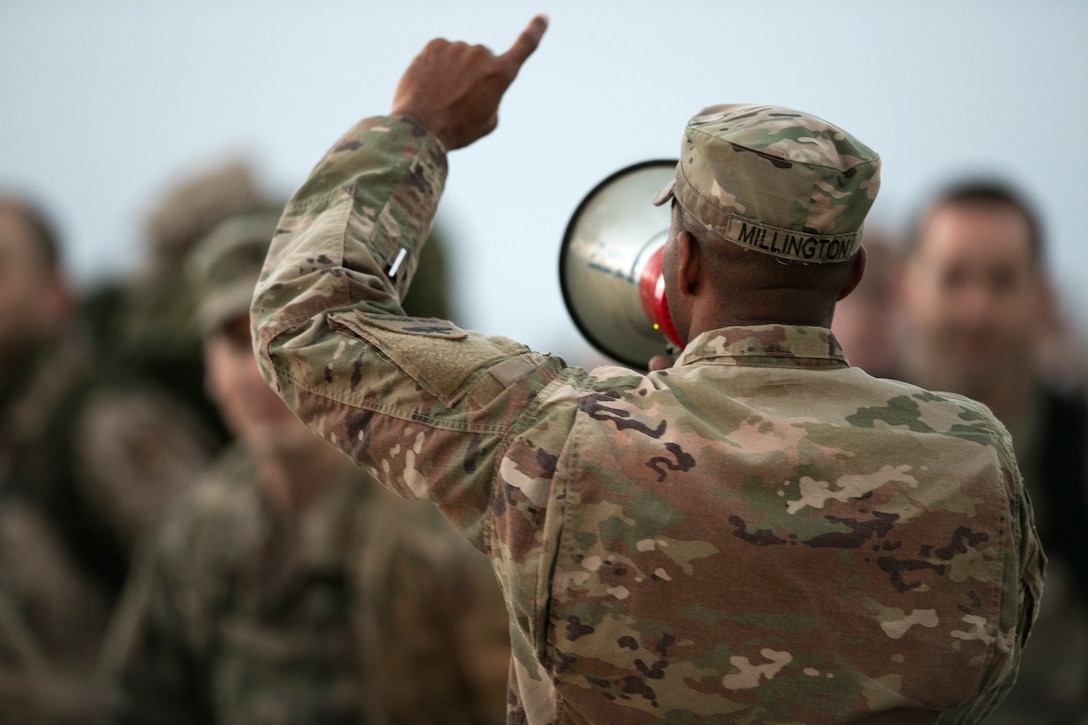.
This is about the opposite of part I in some ways, and it should be a no-brainer because the tech is so cheap and simple.
Before you kill someone in battle, you could and often should ask him to surrender. The easiest way to do that is to have an acoustic device that extends the reach of your voice. You can also enter his radio network and just speak to him in there, but that won't be heard by the vast majority of hostile troops and may be impossible with some digital encrypted radios.
So whenever you lack surprise, just do something scary (tracked AFV noises, powerful bombardment, fire effects, suggest encirclement or imminent flank attack by noises, big blasts) and then proceed to ask for surrender. Wait a bit, rinse, repeat.*
I don't say that every infantryman should have a megaphone and not every tank should have a giant megaphone/loudspeaker. One per infantry platoon and one per tank company would likely suffice. The required effort would be minimal.
PsyOps campaigns could greatly assist such efforts.
Loudspeakers can and were used to simply demoralise hostile troops (typically infantry), even if that does not lead to desertions. Even as late as 1944 the German army ran a very successful propaganda campaign against the Red Army using among other things loudspeakers, and bagged many thousands of deserters.
- - - - -
Megaphones and loudspeakers can also be used for one-way communication with friendly troops when shouting, radioing, arm signals, whistles, tracers and laser pointing are insufficient or unavailable means of communication.
- - - - -
Megaphones and loudspeakers are also useful for interacting with civilians. Civilians may form an obstacle (such as a traffic jam by refugees) and military police or combat troops may need to disperse them. To use a loudspeaker is a much nicer way than guns and a much better one than mere shouting.
- - - - -
Megaphones and loudspeakers might also be used for deception purposes, but I consider this potential as to be very small.
Long story short; give megaphones to all infantry platoons and MP cars/motorcycles as well as loudspeakers to a fraction of the armoured vehicles on the battlefield. The effort (costs, mass, volume, power supply) is negligible compared to the utility.
S O
*: Not to be followed brainlessly, of course. Megaphones/loudspeakers make sense when there's not too much noise and your position to the nearby hostiles is known anyway.
edit:
Fitting to my current blog post; a photo of a ZS-82 loudspeaker vehicle from the war (I forgot to make use of the photo in the blog post). pic.twitter.com/duQr9ldJN6
.


The megafon calling for surrender might have target painted all over. Could a drone calling for surrender be an effective solution? It would quickly change places and could reach a greater area when required.
ReplyDeleteThe human hearing cannot accurately find the direction of such sounds,and megaphones with separate microphones exist, so the user can stay behind cover.
DeleteLarge loudspeakers can and were used to reach hostiles in a large area, demanding surrender. The risks are small, as sound propagates beyond line of sight.
Thank you, while not relevant to the topic at hand, I now understand why ancient battlefield communication needed visuals in addition to sound.
ReplyDeleteDrones with megaphones have been used by the Chinese regime to enforce lockdown, It is a widely available accessory for drones.
ReplyDeleteIn this case a (very) cheap quadcopter and a cheap fixed win aircraft with cheap optics might be sufficient. INS as a backup for GPS might be even enough.
Sorry, forgot to add Firn
ReplyDelete